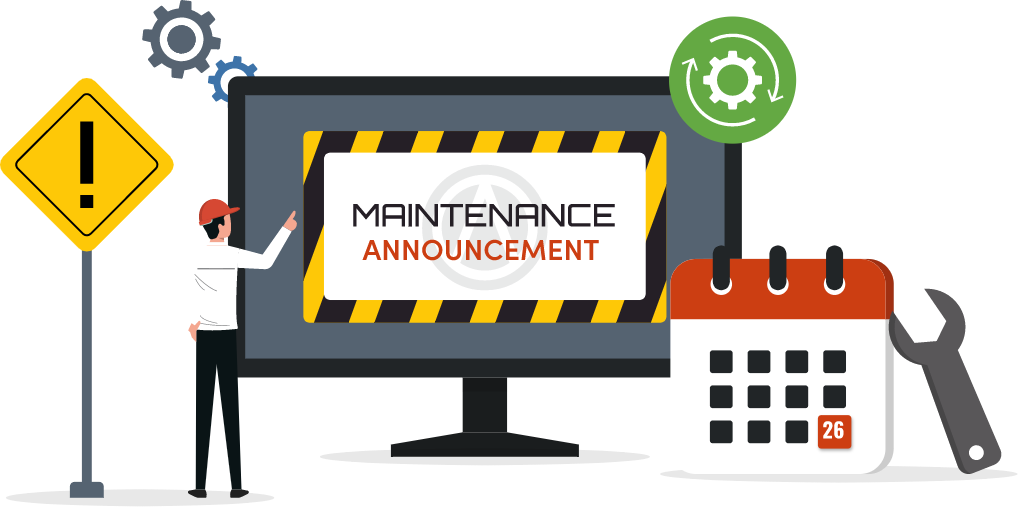How can I prevent unexpected overtime costs?
Careful scheduling, balancing part-time and full-time staff, monitoring consecutive workdays, and using time-tracking technology can help prevent accidental overtime.
Understanding the California Work Week for Restaurants
Overview
Operating a restaurant in California involves much more than managing menus, stock, and serving customers - it also means navigating complex labor laws that govern how your employees work and get paid. One of the most important concepts to understand is the California work week, which forms the foundation for calculating hours, overtime, and compliance with state regulations.
Mismanaging employee hours can quickly lead to unexpected costs, penalties, and staff dissatisfaction. For restaurant owners, where shifts can be long, schedules vary, and part-time employees are common, understanding the rules isn't just a legal necessity - it's a practical way to keep your business running smoothly. By knowing how the work week is defined, how overtime is calculated, and how to track hours accurately, you can make informed scheduling decisions, optimize labor costs, and maintain a fair workplace for your team.
Defining a Work Week in California

Understanding how California defines a work week is the first step for restaurant owners aiming to stay compliant and manage labor costs effectively. Under California labor law, a work week is any consecutive seven-day period, starting on the day chosen by the employer. This seven-day period encompasses 168 hours, and all hours worked within it must be counted when calculating overtime and other labor requirements. Importantly, the start day of your work week can be flexible - it could be Sunday, Monday, or any other day - but once chosen, it must remain consistent.
For restaurant operations, this definition has practical implications. Employees may work irregular hours, split shifts, or multiple shifts across different days, making it essential to clearly define your work week and track all hours accurately. A consistent work week allows you to calculate total hours, daily overtime, and weekly overtime reliably.
It's also important to differentiate a work week from a workday and a pay period. A workday refers to a single 24-hour period, typically used to calculate daily overtime, whereas the work week is the aggregate of these workdays. The pay period, on the other hand, is the schedule in which employees are compensated, which could be weekly, biweekly, or semi-monthly. Understanding these distinctions helps prevent miscalculations and ensures that employees are compensated fairly for every hour worked.
For restaurants, where labor is often the largest expense, accurately defining and tracking the work week is not just a compliance measure - it is a tool for operational efficiency. By knowing exactly which hours fall into each work week, owners can schedule staff more effectively, anticipate overtime costs, and maintain a clear record for both legal compliance and payroll accuracy.
Understanding Overtime Rules
Overtime is one of the most critical aspects of the California work week, especially in restaurants where employees often work long or irregular hours. California law requires that most non-exempt employees receive overtime pay when they exceed certain daily or weekly thresholds. Specifically, employees are entitled to 1.5 times their regular rate of pay for any hours worked over 8 in a single workday or over 40 hours in a work week. Additionally, double time - or twice the regular pay rate - is required for hours worked beyond 12 in a single day or over 8 hours on the seventh consecutive day of a work week.
For restaurant owners, understanding these rules is crucial because labor costs can escalate quickly if schedules are not carefully managed. A common scenario in restaurants is split shifts, where an employee works a morning and evening shift on the same day. In these cases, each hour counts toward the daily total, and overtime may apply if the combined hours exceed 8. Similarly, employees who work multiple roles - such as a cook who also covers front-of-house duties - must have all hours aggregated to calculate overtime correctly.
Practical scheduling strategies can help control unnecessary overtime. For example, staggering shifts, rotating peak-hour coverage among staff, or limiting consecutive long shifts can reduce the likelihood of exceeding daily or weekly thresholds. It's also important to remember that part-time and full-time staff are treated the same for overtime purposes if they exceed these limits.
Accurate tracking is essential. Whether you use a time clock, scheduling software, or manual logs, every hour counts. Miscalculating overtime not only risks compliance violations but also affects employee trust and retention. By understanding daily, weekly, and double-time rules, restaurant owners can plan shifts efficiently, manage labor costs, and ensure fair pay for their team.
Employee Classification and Its Impact
Understanding employee classification is crucial for restaurant owners because it determines who is eligible for overtime and how labor costs are calculated. California law divides employees into exempt and non-exempt categories. Misclassification can result in penalties, back pay, and compliance violations.
1. Non-Exempt Employees
Most restaurant staff, including servers, cooks, dishwashers, and bussers, fall into this category. Non-exempt employees are entitled to overtime pay for hours exceeding 8 per day or 40 per week. All hours worked - whether during split shifts or covering multiple roles - must be counted. Accurate tracking ensures fair pay and prevents legal issues.
2. Exempt Employees
Exempt employees, typically managerial or salaried staff, are not eligible for overtime if they meet California's criteria for salary level and job duties. Examples include general managers or shift supervisors who make managerial decisions, supervise staff, and have authority over scheduling. Misclassifying a non-exempt employee as exempt is a common and costly mistake in restaurants.
3. Impact on Scheduling and Payroll
Correct classification affects scheduling flexibility, labor cost planning, and benefits eligibility. Knowing who is exempt or non-exempt helps owners assign shifts strategically and avoid unexpected overtime expenses. It also ensures employees are fairly compensated for their work, supporting morale and retention.
4. Practical Steps for Compliance
- Review job descriptions carefully.
- Document managerial duties and responsibilities.
- Consult labor law resources or payroll specialists when in doubt.
By clearly classifying employees and understanding the implications, restaurant owners can manage labor efficiently, maintain compliance, and foster a fair workplace.
Scheduling Within the California Work Week

Effective scheduling is a key component of managing the California work week in a restaurant. With staff often working long or irregular hours, careful planning is essential to control labor costs, avoid overtime, and maintain compliance with state regulations.
1. Plan Around Daily and Weekly Thresholds
California law requires overtime pay for hours over 8 in a day or 40 in a week, and double time for hours over 12 in a day or 8 on the seventh consecutive workday. Restaurant owners should structure shifts to minimize unnecessary overtime. For example, rotating employees during peak periods or scheduling breaks strategically can help reduce the risk of exceeding daily limits.
2. Balance Full-Time and Part-Time Staff
Combining part-time and full-time employees strategically can help cover busy periods without creating excess overtime. Part-time staff can fill short shifts or weekend coverage, while full-time staff handle core hours. Keeping track of total hours for each employee ensures compliance and prevents accidental overtime.
3. Monitor Consecutive Workdays
Restaurants often have employees working multiple days in a row, especially during weekends. California's rule regarding the seventh consecutive workday triggers double-time pay, so rotating schedules to give employees rest days can reduce labor costs and promote staff well-being.
4. Use Technology for Accuracy
Time-tracking software, scheduling apps, or digital POS systems can automate hour tracking, making it easier to monitor total hours and calculate overtime. Accurate records help avoid errors, reduce administrative workload, and provide clear documentation in case of audits.
5. Maintain Flexibility
Unexpected staffing changes are common in restaurants due to call-outs, high demand, or special events. A flexible scheduling approach, including backup staff or on-call rotations, can help manage labor while staying within the California work week limits.
By planning shifts carefully, balancing employee hours, and using technology to track work, restaurant owners can optimize scheduling, reduce unnecessary costs, and create a fair, compliant work environment for their team.
Elevate Food Safety, Simplify Compliance!
Experience Seamless Food Safety with Altametrics!
Record-Keeping Requirements
Accurate record-keeping is essential for restaurant owners to comply with California work week laws. Maintaining detailed records of hours worked, overtime, and pay ensures that employees are compensated fairly and protects your business from potential audits, penalties, or legal disputes.
1. Required Records
California law mandates that employers keep records showing the hours worked by non-exempt employees, including start and end times for each shift, total hours worked daily and weekly, and overtime hours. Pay rates, total wages earned, and deductions must also be documented. Even exempt employees' records should reflect salaries and any applicable benefits.
2. Practical Tracking Methods
Restaurants can choose from several methods to track hours accurately. Manual time-cards or sign-in sheets may work for small teams, but digital solutions like POS systems, scheduling software, or mobile time-tracking apps provide greater accuracy and reduce administrative effort. Automation can also alert managers when employees are approaching overtime thresholds, allowing proactive schedule adjustments.
3. Duration of Record Retention
California requires that payroll records be retained for at least three years, while time sheets should be kept for four years. Maintaining organized records in an easily accessible format helps ensure compliance and simplifies reporting during audits or internal reviews.
4. Benefits Beyond Compliance
Accurate record-keeping also supports operational efficiency. By analyzing work hours, restaurant owners can identify patterns, optimize staffing, and reduce unnecessary labor costs. It fosters transparency, builds trust with employees, and helps prevent payroll errors that can negatively affect morale.
Consistent, detailed record-keeping is not just a legal requirement - it's a practical tool for running a restaurant efficiently. By tracking hours carefully, documenting pay accurately, and storing records securely, owners can protect their business, manage labor costs, and ensure fair treatment of their staff.
Common Pitfalls and How to Avoid Them
Even experienced restaurant owners can make mistakes when managing the California work week, and these errors can lead to costly penalties, payroll issues, and employee dissatisfaction. One of the most frequent pitfalls is miscalculating overtime. Because California requires daily and weekly overtime, it's easy to overlook hours when employees work split shifts, cover multiple roles, or pick up additional shifts during busy periods. Failing to track these hours accurately can result in underpayment and compliance violations.
Another common issue is misclassifying employees. Treating non-exempt employees as exempt to avoid paying overtime is a frequent mistake that can trigger legal and financial consequences. Clear job descriptions and understanding of state guidelines are essential to prevent misclassification.
Inconsistent scheduling also creates problems. When shifts are planned without considering the work week or daily limits, employees may inadvertently exceed thresholds, triggering overtime or double-time pay. This is particularly true in restaurants with high turnover or fluctuating demand, where staffing decisions are made on the fly.
Poor record-keeping is another area where restaurants often fall short. Without accurate logs of hours worked and pay rates, owners have little protection in case of disputes or audits. Even small errors in recording start and end times can accumulate into significant discrepancies over weeks or months.
Preventing these pitfalls requires proactive management. Use time-tracking systems or software to monitor hours, review schedules before finalizing them, and provide regular training for managers on labor law compliance. Regularly auditing payroll and work hours can catch errors early, ensuring employees are paid correctly and the restaurant stays compliant. By addressing these common mistakes, restaurant owners can reduce labor costs, maintain employee trust, and operate more efficiently within California's work week rules.
Key Takeaways for Restaurant Owners
Understanding the California work week is essential for restaurant owners who want to stay compliant, control labor costs, and maintain a satisfied workforce. Key points to remember include defining your work week consistently, tracking hours accurately, understanding overtime rules, classifying employees correctly, and keeping detailed records. Each of these steps is interconnected - missteps in one area can quickly create payroll issues, compliance risks, or staff dissatisfaction.
Effective scheduling and careful oversight of employee hours not only prevent legal penalties but also support operational efficiency. By proactively managing shifts, monitoring overtime, and maintaining clear records, restaurant owners can plan labor costs, reduce unexpected expenses, and create a fair workplace where employees feel valued.
For restaurant operators looking to simplify this process, Altametrics offers powerful tools that make scheduling, time tracking, and labor management easier than ever. Their platform provides real-time insights into employee hours, overtime alerts, and compliance reports tailored to California labor laws. With Altametrics, you can streamline payroll, optimize scheduling, and ensure your restaurant operates efficiently while staying fully compliant with California work week regulations.
Take control of your labor management today and reduce the stress of navigating complex labor laws - learn more about Altametrics by clicking "Book a Demo" below.
Must-Read Content

California Overtime Law 2025 Explained for Small Restaurants

Understanding California Work Hour Laws for Hotels

A Hotel Owner's Guide to Labor Laws in California

California Employee Rights Every Restaurant Owner Needs to Know










